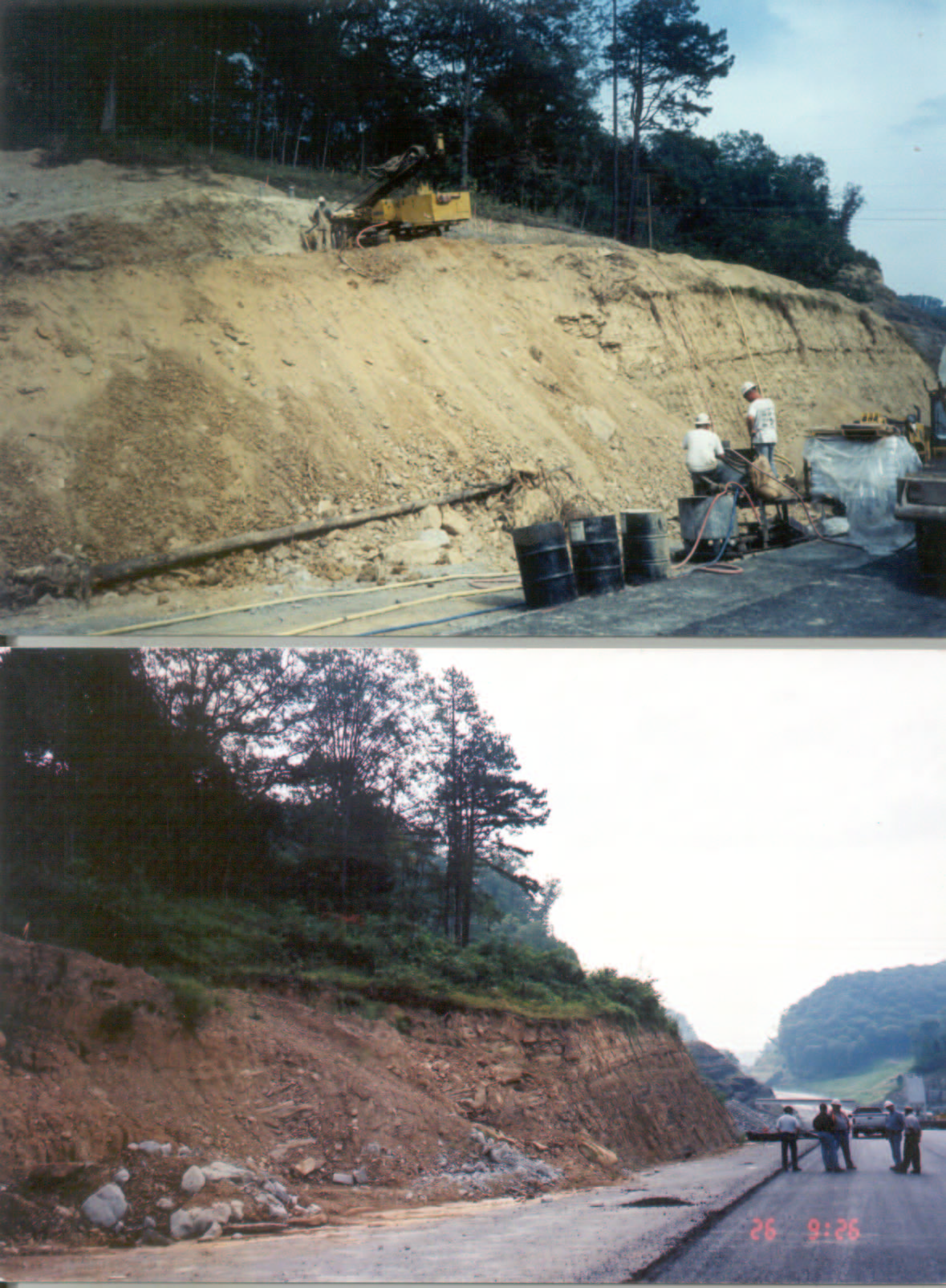Soil Nailing: Nation’s DOTs Warm Up to New Technology

A Better Roads Exclusive
Soil and rock nailing is a relatively new construction technique first utilized in Europe to stabilize and construct tunnels. In North America, it is quickly becoming a popular method of soil and rock retention, slope stabilization, and shoring. Soil nailing provides project owners and DOTs economic benefits and a rapid means of retaining wall and retention support system construction. Two very different projects proved the advantages of soil nailing over conventional retaining wall construction for DOTs in Kentucky and Iowa.
Ken Abud, Business Development Manager for The Judy Company, Kansas City, describes the basic technology behind a soil nailing project. One of a relatively small number of contractors performing soil nailing, The Judy Company specializes in a variety of geotechnical construction.
Soil nailing projects generally follow the same basic procedure. Geotechnical engineers design the soil nailing project, taking into account including soil compatibility, and strength requirements of the grout and shotcrete. The technique, appropriate in many cohesive soils or fragmented rock, is top-down construction.
A bench is excavated ranging between four and six feet in height. Holes are drilled into the excavated face typically measuring 6-8-inches in diameter in soil and 3-4 inches in rock. Typically holes are angled at 15 degrees below horizontal. The hole is pumped full of ready-mixed grout soon after drilling to ensure the hole remains open. Nails, generally continuously threaded steel bars, are long enough to penetrate the failure plane of the excavation, and are inserted immediately following grouting. The nails are equipped with centralizers to ensure central placement in the grouted hole. The concept is to stabilize the soil by creating a grouted mass that the surrounding soil will act upon in friction. The grout also provides corrosion protection for the nail. Once the grout sets, the protruding nails are fitted with a steel plate to transfer forces from the wall to the nail. Horizontal and vertical drain strips are then installed onto the facing to control seepage and eliminate hydrostatic pressure buildup.
Reinforcing steel is applied and the face is shotcreted. For temporary walls, as in shoring or behind a cast-in-place concrete finish, the surface can be left rough or lightly troweled. For permanent walls, the shotcrete can be hand troweled or even sculptured and stained to blend into the natural surroundings depending on the desired look.
Because of the potential that the soil will collapse after being excavated, a soil nailing contractor only cuts as long a bench as crews can complete in a 24-hour period. “You cut only what can be finished in a day, shotcrete and everything,” says Abud. “On any given job the pump is almost continually working, so it must be reliable. It is the key to making the technique work, maintaining productivity, and staying on schedule and budget.”
Soil nailing has several applications, and Judy Company has been contracted for a range of projects across the nation. The Judy Company recently completed an 8500-square foot wall in Pike County, Kentucky as a subcontractor. The original plans required a cast-in-place wall in front of the shotcrete shoring. As an alternative, The Judy Company proposed a soil-nailed and shotcreted wall sculpted and stained to look like adjacent highway cuts. The proposal was accepted and Boulderscape, Capistrano Beach, CA, was contracted to place and sculpt the shotcrete. Working from a manlift the shotcrete was placed with a Schwing concrete pump. Sculptors from another manlift carved the shotcrete from the top down using hand trowels and brushes, emulating natural rock formations in the area. After curing, the wall was stained, making the finished product look like a natural cut.
At the same time the contractor was finishing a massive, 63,000 square foot soil nailing project on I-235 in Des Moines as specified by the Iowa DOT. Crews finished over 1500 square feet a day.
Judy Company President Pat Carr says the Des Moines project is a true testimony to soil nailing as a successful soil retention technique. “Using top-down construction and this technology, the highway could be constructed in the minimum right-of-way. Soil nailing allowed excavation very close to city streets and utilities and eliminated detours during construction,” he said.
Soil nailing is also applicable in building construction, particularly when job site space is limited and property lines leave no room for cut and slope methods. The Judy Company has utilized soil nailing technology during the construction of several commercial buildings, providing project owners economic benefits over expensive conventional retaining systems, and rapid project turn-around.
Carr emphasizes the rate of growth in the industry and places high value on reliable equipment and field support in his industry. “It’s important that no matter where we are in the U.S., manufacturers and distributors make sure we have the parts and maintenance help we need to keep going.”





